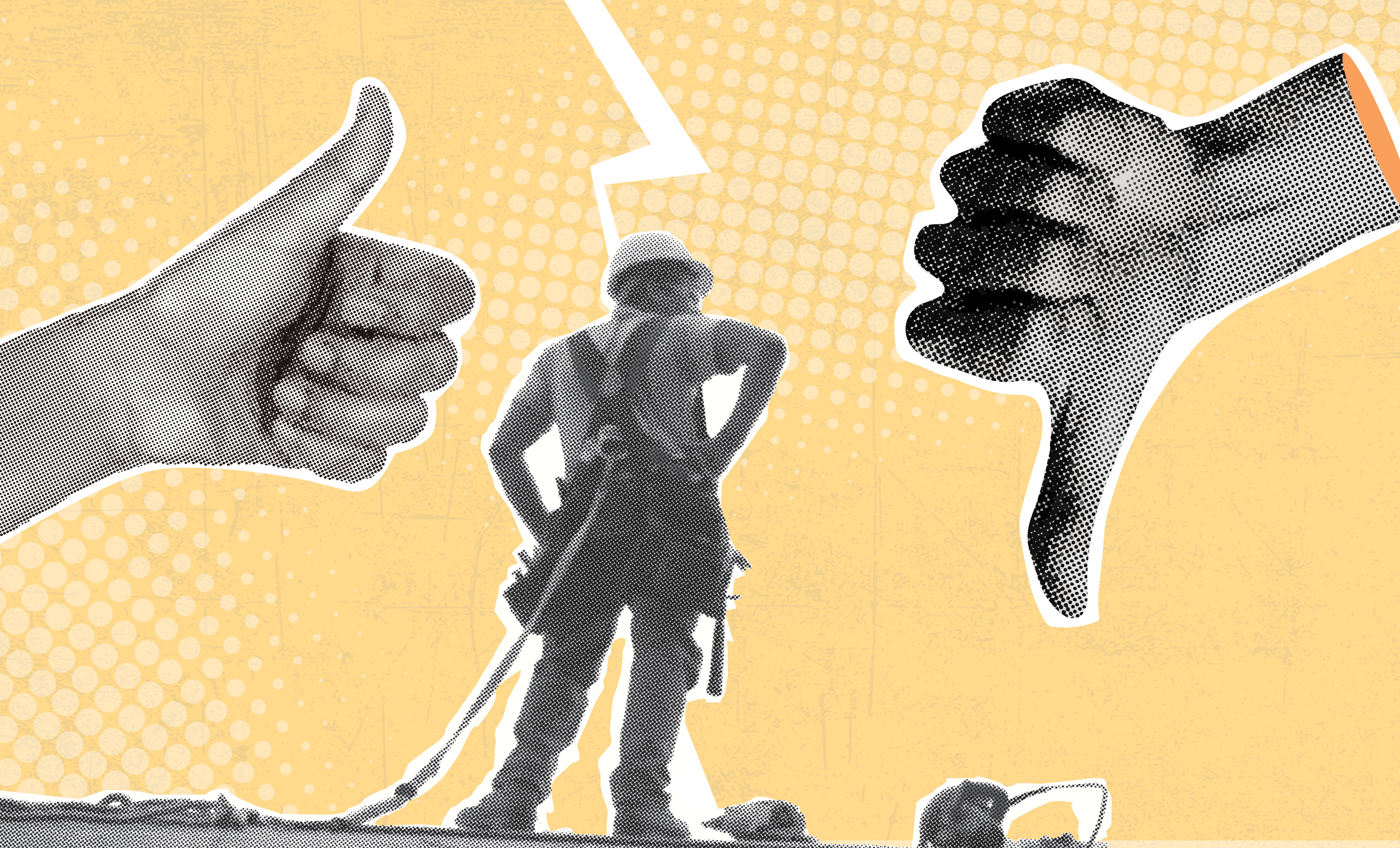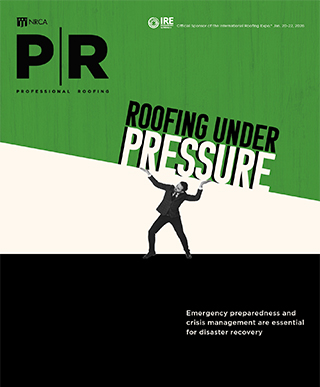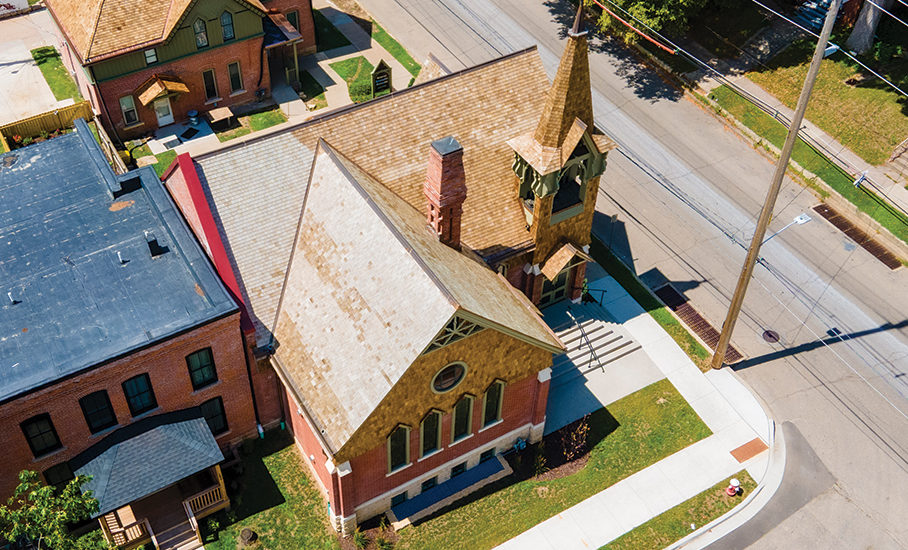
Editor’s note: This article is for general educational purposes only and does not constitute legal advice.
The U.S. roofing industry has long relied on a mobile, labor-intensive workforce that intersects daily with immigration law. Although federal law does not yet compel every private employer to run new hires through E-Verify, the system is mandatory on covered federal projects and increasingly required by several states. You should become familiar with the principal advantages and risks of E-Verify from a construction law perspective and know how to mitigate exposure while maximizing competitive benefits.
How it works
E-Verify is a web-based portal administered by U.S. Citizenship and Immigration Services that compares information from a new hire’s Form I-9 against Social Security Administration and Department of Homeland Security databases. Federal contractors whose agreements incorporate FAR 22.18 must run E-Verify on all employees assigned to the covered contract and on all new hires companywide, a requirement rooted in a 2009 executive order.
At the state level, the patchwork is expanding. California expressly prohibits the state or its subdivisions from requiring private employers to use E Verify, but as of July 2025, the following jurisdictions obligate most private employers to participate:
- Alabama, Arizona and South Carolina: All private employers
- Florida, North Carolina and Tennessee: Private employers meeting minimum workforce thresholds (25 employees in Florida and North Carolina; 35 in Tennessee)
In Georgia, all public works contractors and every private employer with more than 10 employees must use E-Verify to obtain/renew their business licenses; and in Utah, public works contractors must use E-Verify. In addition, private employers with more than 150 employees must enroll.
A growing number of states including Colorado, Idaho, Indiana, Oklahoma and Pennsylvania compel the use of E-Verify for state agencies and many public contractors even if private-sector mandates do not yet reach every roofing contractor.
Given this lattice of requirements, multistate contractors cannot assume federal voluntariness translates to local immunity; in some jurisdictions, failure to enroll can trigger license suspension, bid disqualification or even felony charges.
The case for E-Verify
There are several ways E-Verify can help your business.
For instance, you gain contract eligibility and competitive advantage. Compliance is simply the price of admission on federal work and in numerous state and municipal procurement projects. With government reroofing outlays elevated by post-pandemic infrastructure programs, refusing to adopt E-Verify can exclude a company from lucrative bid lists.
In addition, E-Verify offers a documentary safe harbor. It should be noted E-Verify is not 100% accurate and mistakes can be made. However, when properly used, E-Verify creates a dated transaction record confirming an employer took affirmative steps beyond a good-faith Form I-9 review. Although not an absolute defense, the Department of Justice’s Immigrant and Employee Rights Section routinely weighs diligent E-Verify use when assessing whether to file “known” or “should have known” charges.
E-Verify also standardizes hiring workflow. Because the portal enforces field validations (for example, a user cannot upload expired documents or inconsistent name and Social Security number formats), it helps decentralized field offices apply uniform practices. The immediate feedback also reduces inadvertent paperwork errors that commonly surface during Immigration and Customs Enforcement audits.
In addition, many owners, developers and bonding companies increasingly view voluntary enrollment as evidence of a contractor’s compliance culture, an intangible benefit that can differentiate bidders without adding material cost.
Risks and drawbacks
But the E-Verify process is not without its problems.
For instance, E-Verify validates documents match government records; it does not confirm the presenter is the rightful owner. Recent enforcement sweeps have uncovered entire crews whose stolen identities sailed through E-Verify. If you rely exclusively on the system, you risk overlooking the need for visual document inspection and photo-matching when available.
If an SSA or DHS record mismatch occurs, you must provide the employee a “Further Action Notice,” pause adverse action and allow up to eight federal business days for resolution. Technical glitches, such as a mismatch outage that occurred this past spring, can extend these timelines and complicate crew mobilization.
E-Verify also can leave a company vulnerable to discrimination exposure. Overzealous attempts to verify a worker’s eligibility can violate anti-discrimination rules. Common pitfalls include pre-screening before a job offer, selective use based on perceived ethnicity or premature termination upon a mismatch alert. DOJ’s settlement roster shows back pay and civil penalties exceeding $100,000 per case in the construction sector.
The E-Verify Memorandum of Understanding binds employers to secure personal information and limit access to “designated users.” Lax password controls, mobile screenshots or printed material left on clipboards can trigger breach liability under state privacy statutes, especially in California and Colorado where biometric data and driver-license images attract heightened scrutiny.
In addition, small-sized contractors may lack human resources staff to manage account reverifications, rehires within three years and annual E-Verify tutorials. Worse, once a company is enrolled in E-Verify, failure to run any new hire through the process can be construed as conscious avoidance, potentially harsher than never enrolling at all. A 2023 Government Accountability Office report criticized federal agencies for unevenly monitoring contractor compliance, signaling more aggressive audits ahead.
The variance of the law also is a burden. Employers operating in multiple jurisdictions must juggle divergent retention periods, notification templates and penalty structures. Alabama authorizes business-license revocation; Florida imposes fines of $1,000 per day for noncompliance after a third finding of nonuse within any 24 month period; and Tennessee conducts random audits with a 45-day window to produce evidence of compliance before daily penalties begin. The resulting administrative mosaic rivals multistate sales tax complexity.
Mitigation strategies
To decrease chances of running afoul of the law, you should:
- Develop an “all locations” compliance matrix mapping which divisions, joint ventures and supplier entities fall under federal or state mandates. This should be updated quarterly as headcounts fluctuate.
- Institute dual Form I-9/E-Verify reviews so a second approver audits each submission, confirming Form I-9 Section 2 is complete, document photos match the individual and the case number is recorded.
- Centralize entry or outsource to an E-Verify employer agent so foremen never handle portal credentials.
- Embed anti-discrimination training at orientation and annual safety days, reiterating that no adverse action occurs until a mismatch is fully resolved.
- Adopt incident-response protocols with templated Further Action Notices and logs of contest dates. If a mismatch persists beyond 10 federal workdays, consult counsel before discharging an applicant or employee.
- Layer identity-fraud safeguards, such as barcode readers, to compensate for E-Verify’s single-factor limitations.
- Document subcontractor flow-down clauses requiring enrollment, weekly verification logs and indemnities covering penalties arising from noncompliance.
- Store Form I-9s and confirmations electronically for the longer of three years after hire or one year after termination using encrypted repositories that time-stamp edits. Check state laws regarding additional record-keeping requirements.
Looking ahead
Congress is debating the Accountability Through Electronic Verification Act, which would phase in a nationwide mandate and increase penal-ties for knowingly employing unauthorized labor.
USCIS has rolled out a pilot program, E-Verify+, a single online portal that merges the Form I-9 completion process with the standard E-Verify check, allowing employers to handle both steps in one streamlined workflow with further advancements expected in the future.
E-Verify is neither a panacea nor a minefield; it is a compliance tool whose value depends on disciplined execution. Those who master the system can bid seamlessly across federal, state and municipal projects, document good-faith hiring, and gain reputational capital with customers and regulators alike. Those that enroll casually or unevenly risk discrimination claims, license jeopardy and the embarrassment of ICE raids exposing identity-fraud blind spots.
Many roofing contractors grapple with whether to enroll in E-Verify because the traditional Form I-9 process permits a largely passive approach: You can accept documents that appear genuine and need not dig deeper unless a government agency later intervenes. Adopting E-Verify upends that balance. Once enrolled, you must either dismiss any employee whose work authorization cannot be confirmed or risk criminal liability for knowingly retaining an unauthorized worker. In the current enforcement climate, this is a difficult, high stakes choice for every business.

TRENT COTNEY
Partner and practice group leader
Adams and Reese LLP



